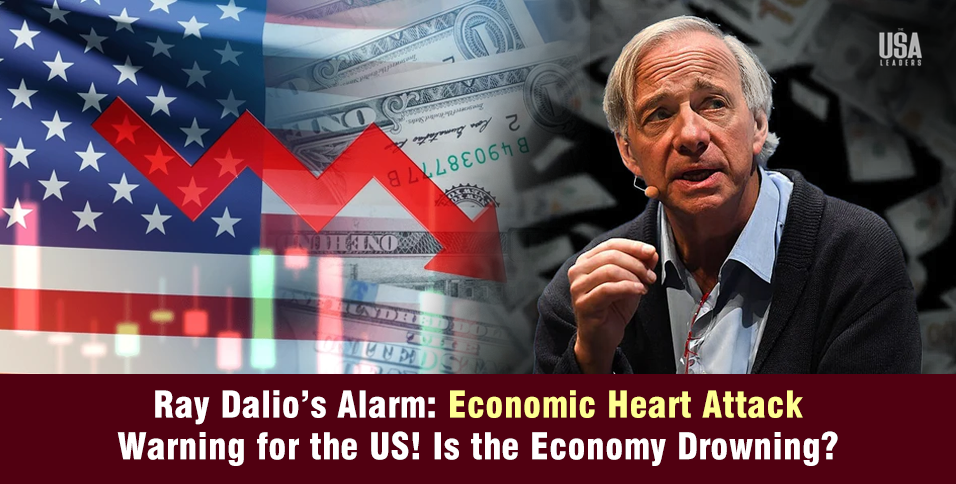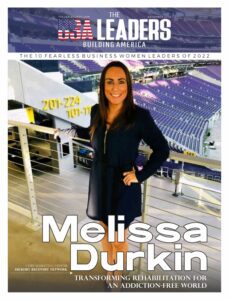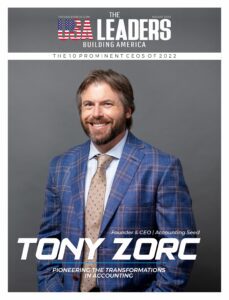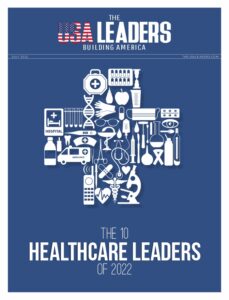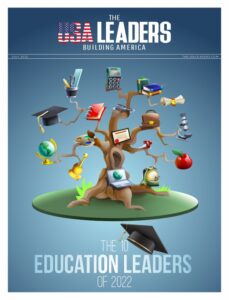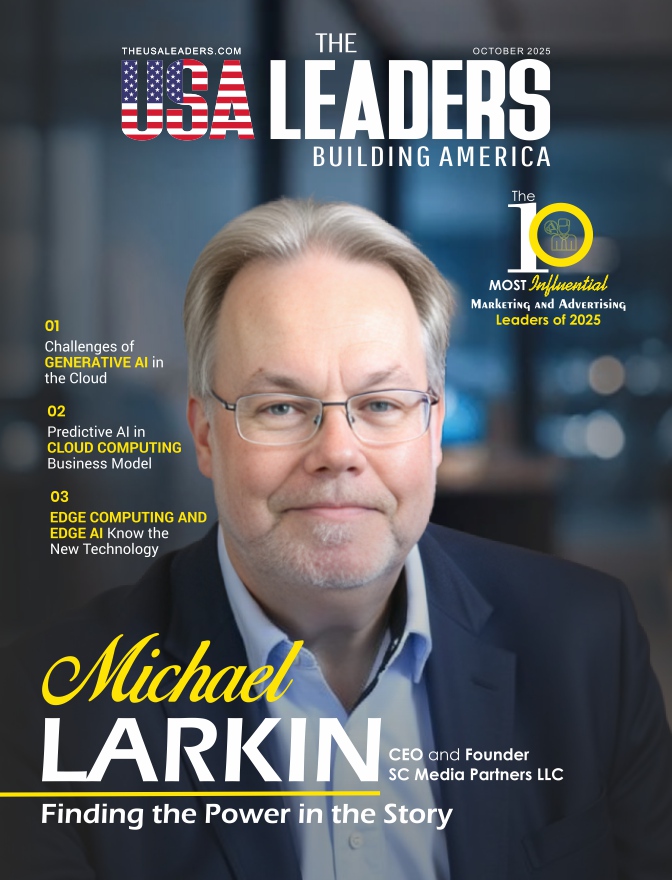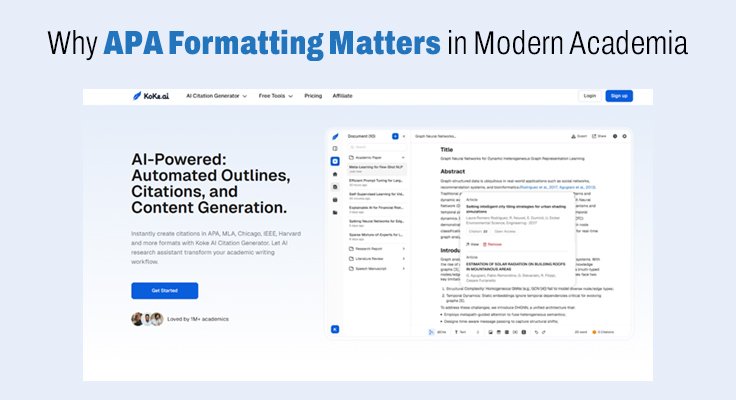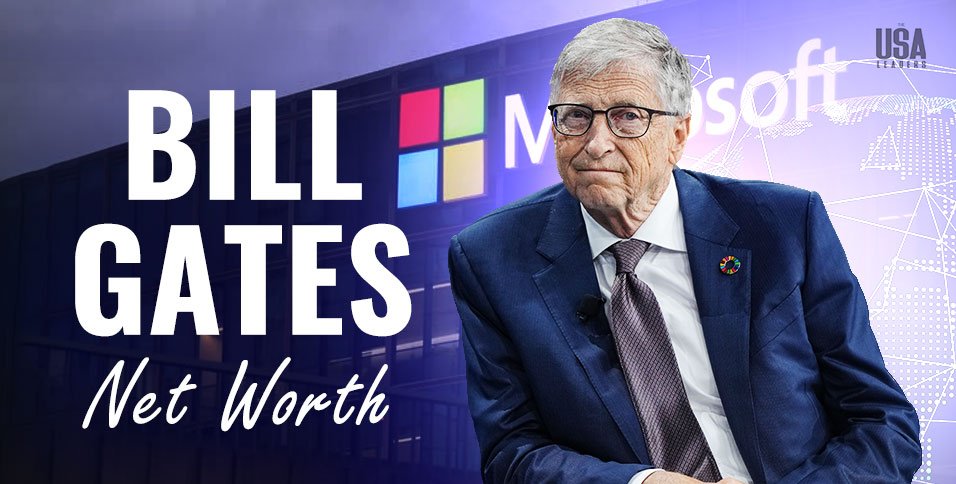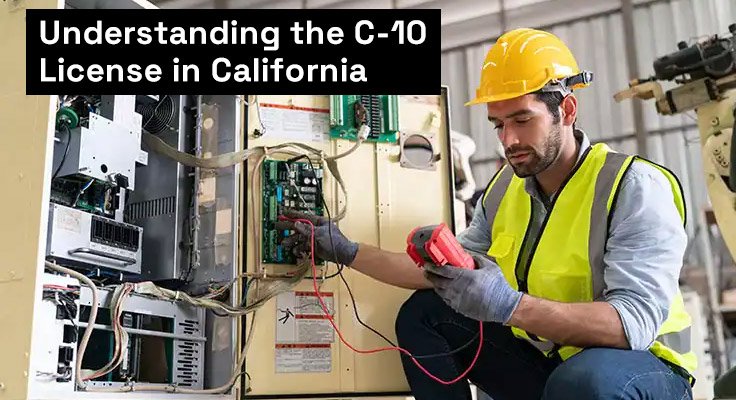The USA Leaders
July 25, 2025
Washington, D.C. – One of the most respected voices in global finance, Ray Dalio, has issued a dire prediction: the country is heading toward what he calls an Economic Heart Attack. This term is not just a catchphrase—it’s a stark metaphor for a brewing financial crisis in the world’s largest economy, fueled by a ballooning national debt, a runaway fiscal deficit, and the rising costs of borrowing.
As the US economy teeters on the brink of crisis, the question on everyone’s mind is: Is the American economy headed for collapse?
What Is the “Economic Heart Attack”?
Dalio’s term for this looming financial disaster, the economic heart attack, vividly illustrates the symptoms of an economy under severe stress. Just like clogged arteries before a heart attack, America’s financial system is burdened by growing debt, excessive government spending, and rising interest payments. The risk of this economic heart attack becomes ever more real as the nation’s fiscal health deteriorates.
The US national debt has surged past an alarming $37 trillion, with government spending outstripping revenue by nearly 40%. Interest payments on this colossal debt are consuming a significant portion of the federal budget, crowding out spending on everything from infrastructure to education.
As Dalio warns, if this trajectory isn’t corrected, the country could soon be borrowing money simply to service its existing debt, triggering a vicious cycle of rising costs and shrinking resources.
Key Drivers Behind the Crisis Fears
Several interconnected factors have set the stage for the US’s economic health crisis:
- Exploding National Debt: At $37 trillion, the national debt has reached unprecedented levels. The country’s ability to service this debt without spiraling into a crisis is increasingly in doubt.
- Rising Debt Service Costs: Interest rates are at elevated levels, and the cost of servicing this debt is ballooning. This has led many experts to fear that the US may soon need to issue new debt just to pay the interest on existing debt—a situation often referred to as a “debt spiral.”
- Fiscal Deficit: The US is running a deficit of about 7.5% of GDP, much higher than sustainable levels. Recent legislation, including the highly debated “One Big Beautiful Bill,” is projected to worsen this deficit by another $3.4 trillion over the next decade.
- Political Gridlock: Despite the urgency of the situation, bipartisan cooperation remains elusive. With political gridlock in Washington, the prospect of any meaningful fiscal reform is dim, making the situation even more precarious.
- Inflation and Slow Growth: Inflation remains above target, with core inflation expected to hover between 3% and 3.2% for 2025. Coupled with a slowing GDP growth rate, the US economy seems to be grinding to a halt, while the cost of living continues to rise.
- Demographic Shifts: As the baby boomer generation ages and healthcare costs rise, the fiscal burden is only expected to worsen in the coming years, particularly in terms of entitlement spending like Medicare and Social Security.
Policy Risks and Political Challenges
The current administration’s policy decisions, including aggressive tariff impositions and rising healthcare costs, add further volatility to the mix. The likelihood of any quick, effective response is low, as partisan gridlock in Congress makes it difficult to enact any real changes to the budget or tax system.
Dalio points out that without drastic changes, such as reducing the deficit to around 3% of GDP and reforming the tax and spending systems, the US risks entering a “death spiral” of borrowing. If investors lose confidence in US debt, borrowing costs will rise sharply, which could lead to an economic meltdown with far-reaching consequences.
Ray Dalio’s Recommendations for Reform
To prevent this economic heart attack from becoming a full-blown crisis, Dalio outlines a series of tough but necessary reforms:
- Reduce the Deficit: Dalio advocates for bringing the federal deficit down to approximately 3% of GDP within the next three years—a target reminiscent of the balanced fiscal policies of the 1990s.
- Bipartisan Cooperation: Dalio emphasizes the need for both parties to compromise. This could mean a mix of spending cuts and tax reforms—unpopular, but necessary to restore balance.
- Focus on Long-Term Productivity: In addition to fiscal measures, Dalio encourages investment in productivity-boosting technologies like automation and AI, though he acknowledges that these are long-term fixes.
- Lower Interest Rates Through Fiscal Discipline: By reducing the deficit and boosting investor confidence, Dalio believes interest rates could be lowered, reducing the burden of debt service and freeing up resources for other areas of the economy.
Will Political Polarization Derail Dalio’s Plan?
While Dalio’s suggestions are logically sound, the likelihood of them being implemented is uncertain due to the deep political polarization in the US. Both Democrats and Republicans have become entrenched in their positions, with little appetite for the kind of compromise that would be required to tackle the deficit.
Past history, such as the successful deficit-reduction efforts of the 1990s, offers some hope, but the current political environment is vastly different—one defined by gridlock and ideological extremes.
Global Repercussions: The Ripple Effect
Given that the US economy plays a central role in the global financial system, any significant downturn or loss of confidence in US debt would have devastating global repercussions. Countries and investors who rely on US Treasury bonds as a safe investment could be forced to reconsider their positions, leading to global market instability.
In the worst-case scenario, a loss of faith in US debt could lead to skyrocketing interest rates, making it more difficult for the government to borrow and finance operations. The ensuing financial panic would send shockwaves through markets, leading to widespread economic disruptions.
Conclusion: The Road to Recovery
Ray Dalio’s warning serves as a wake-up call for both policymakers and the public. With the country’s fiscal health deteriorating, urgent action is required to prevent a financial crisis of historic proportions. Whether or not Washington can muster the political will to take meaningful steps toward fiscal discipline remains uncertain.
What is clear, however, is that without a drastic shift in policy, the US economy may be on the brink of its own economic heart attack—one that could have devastating effects both at home and abroad.
The question now is: Can the US avert disaster before it’s too late?


